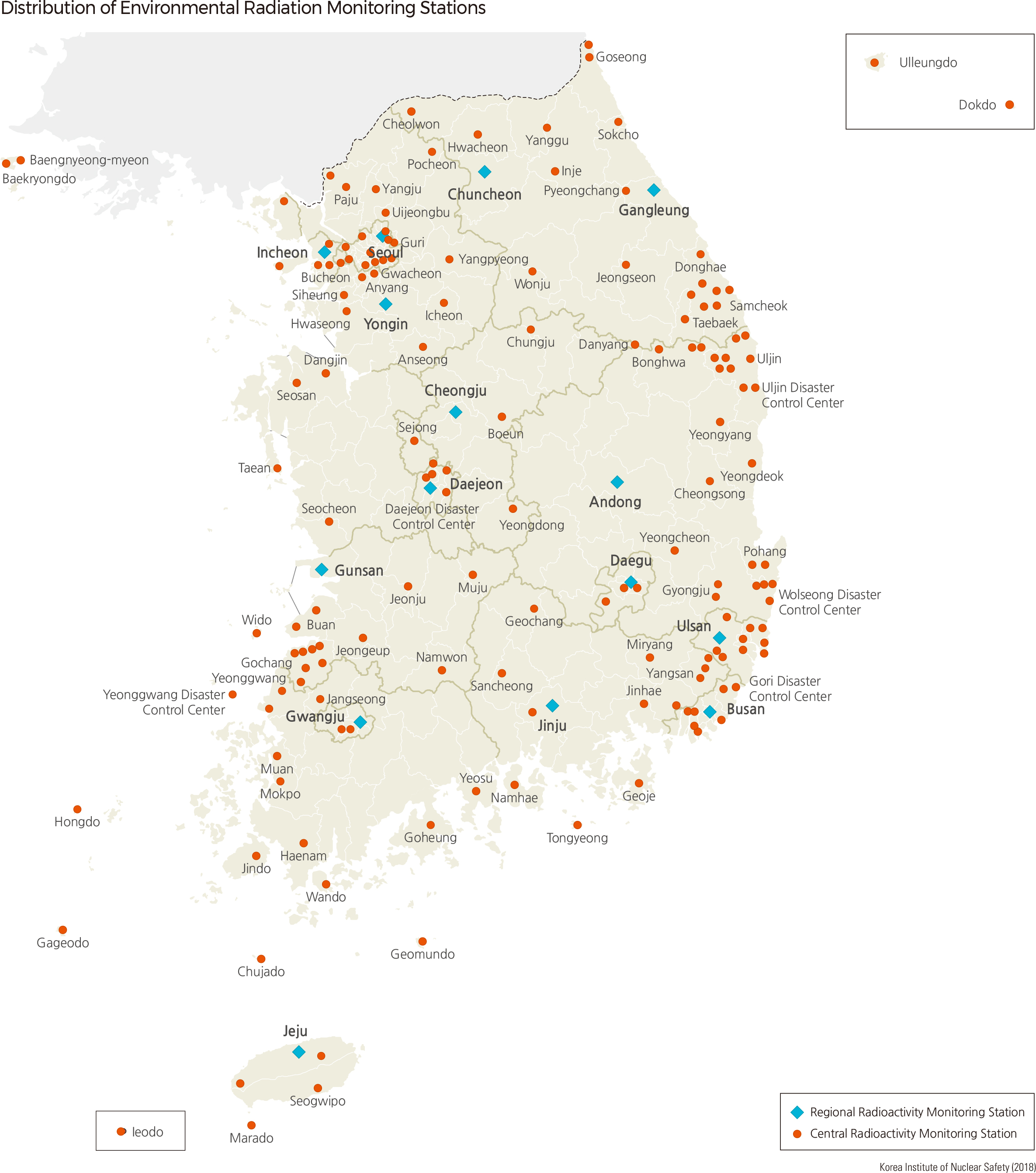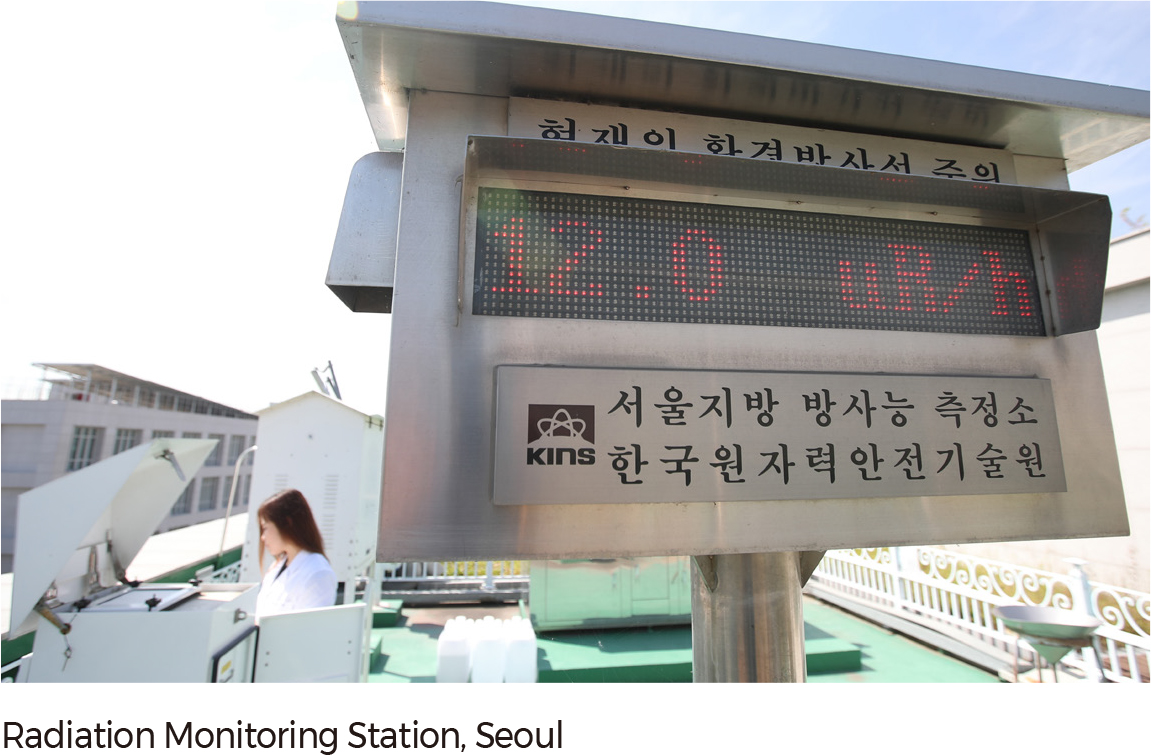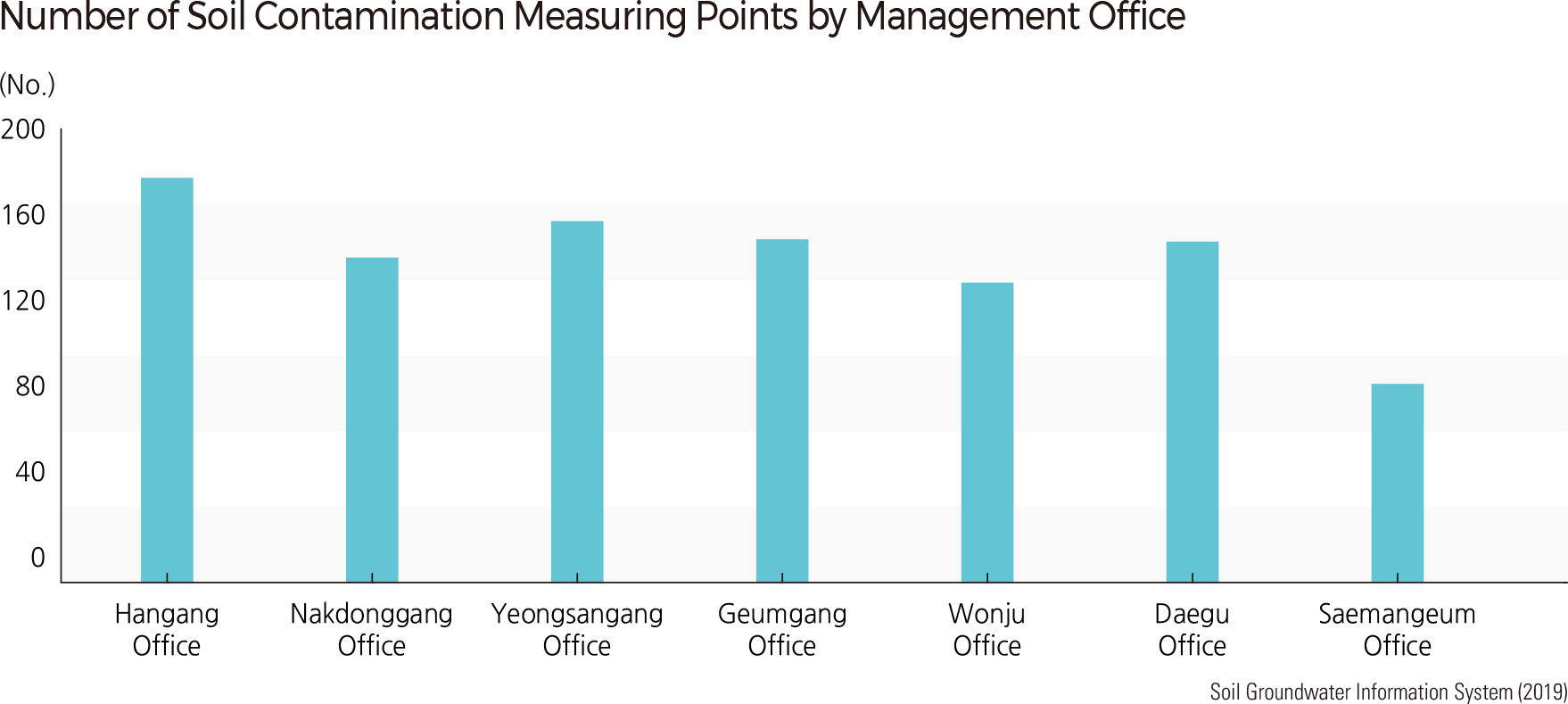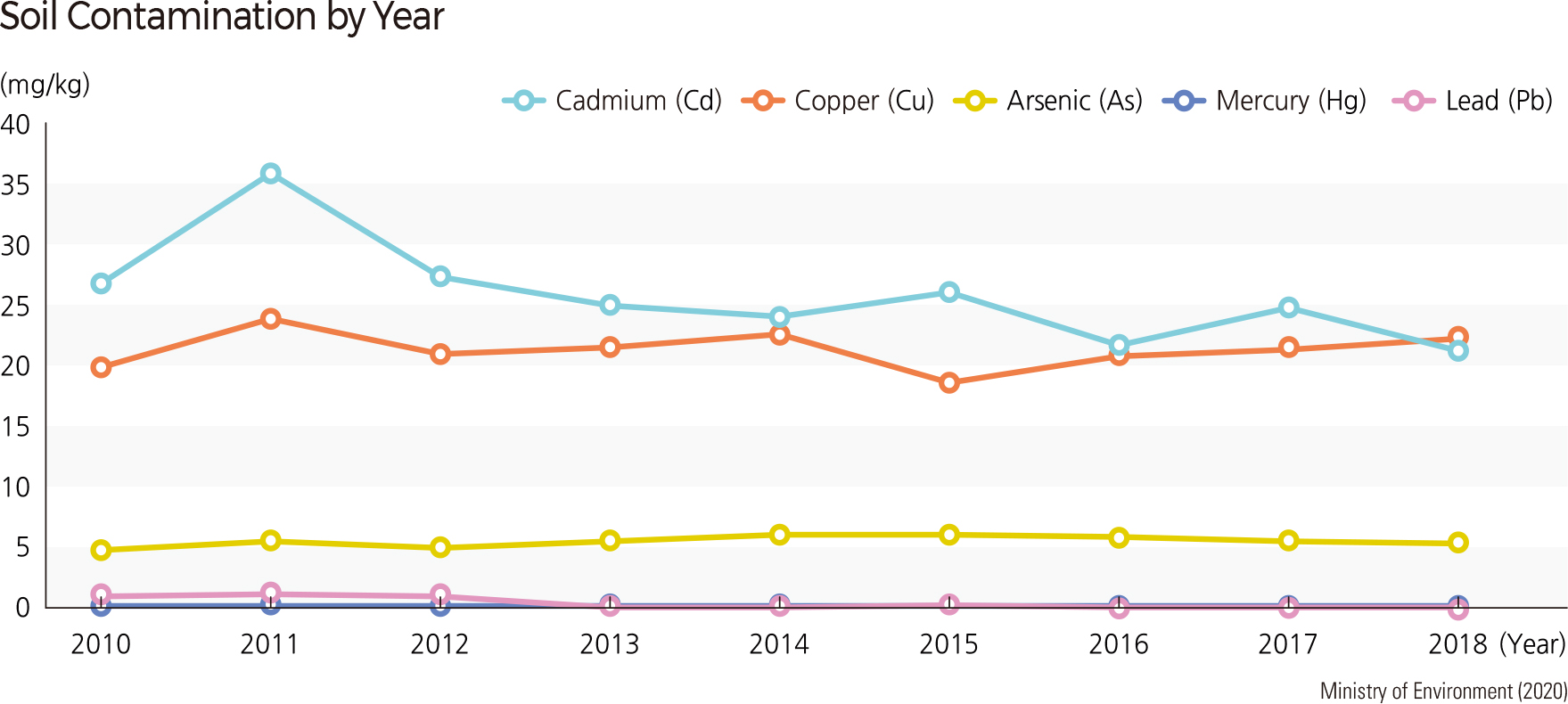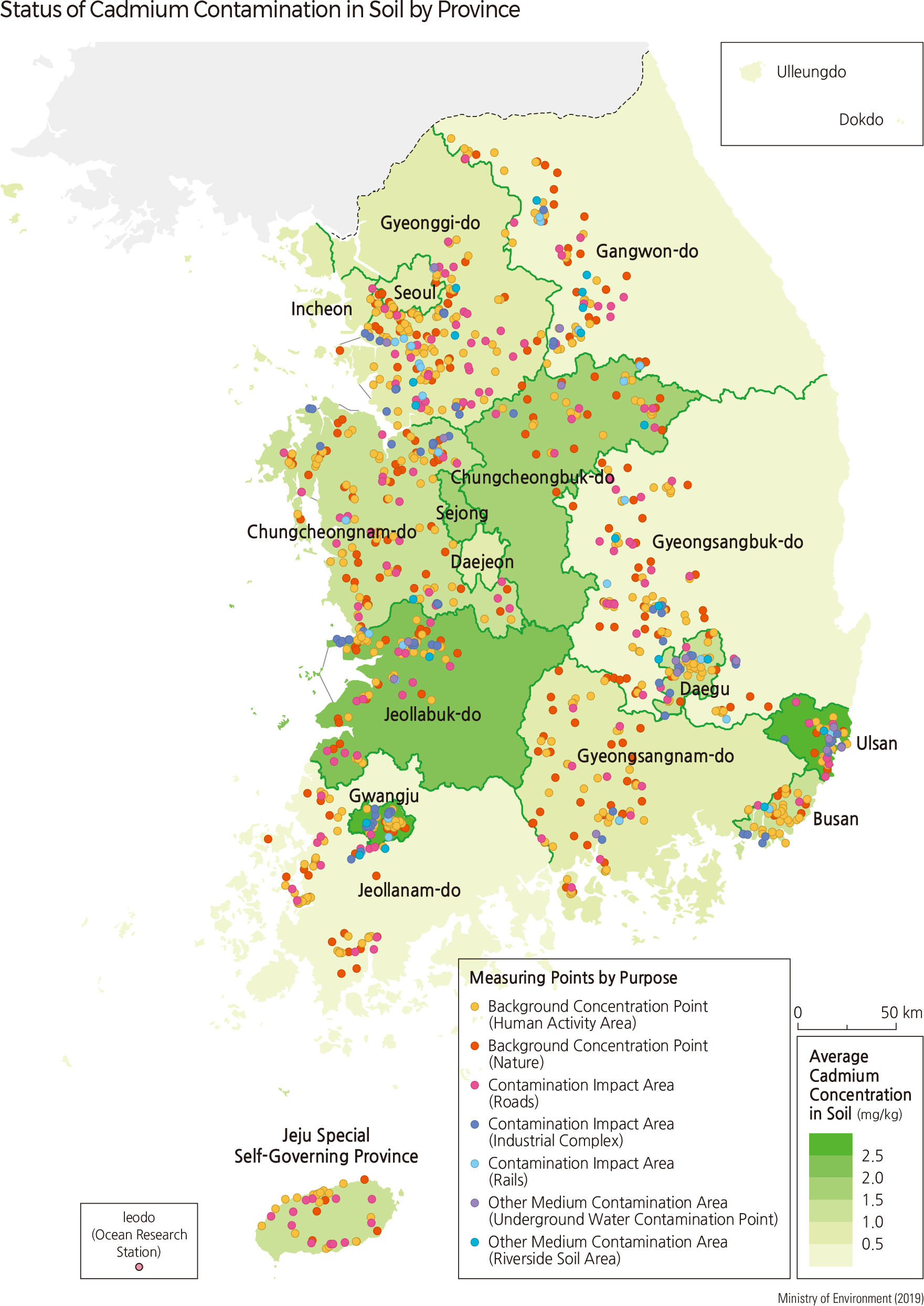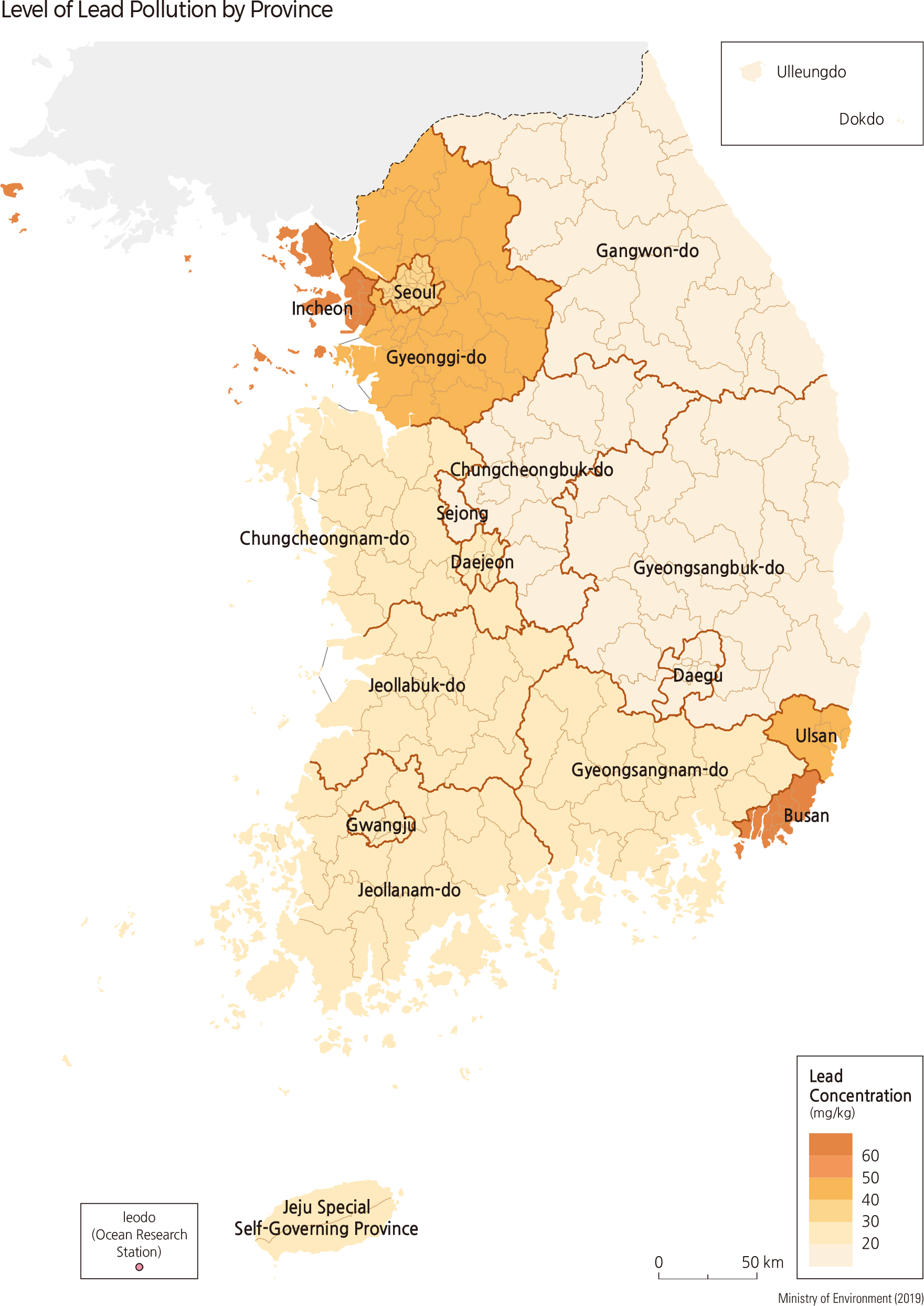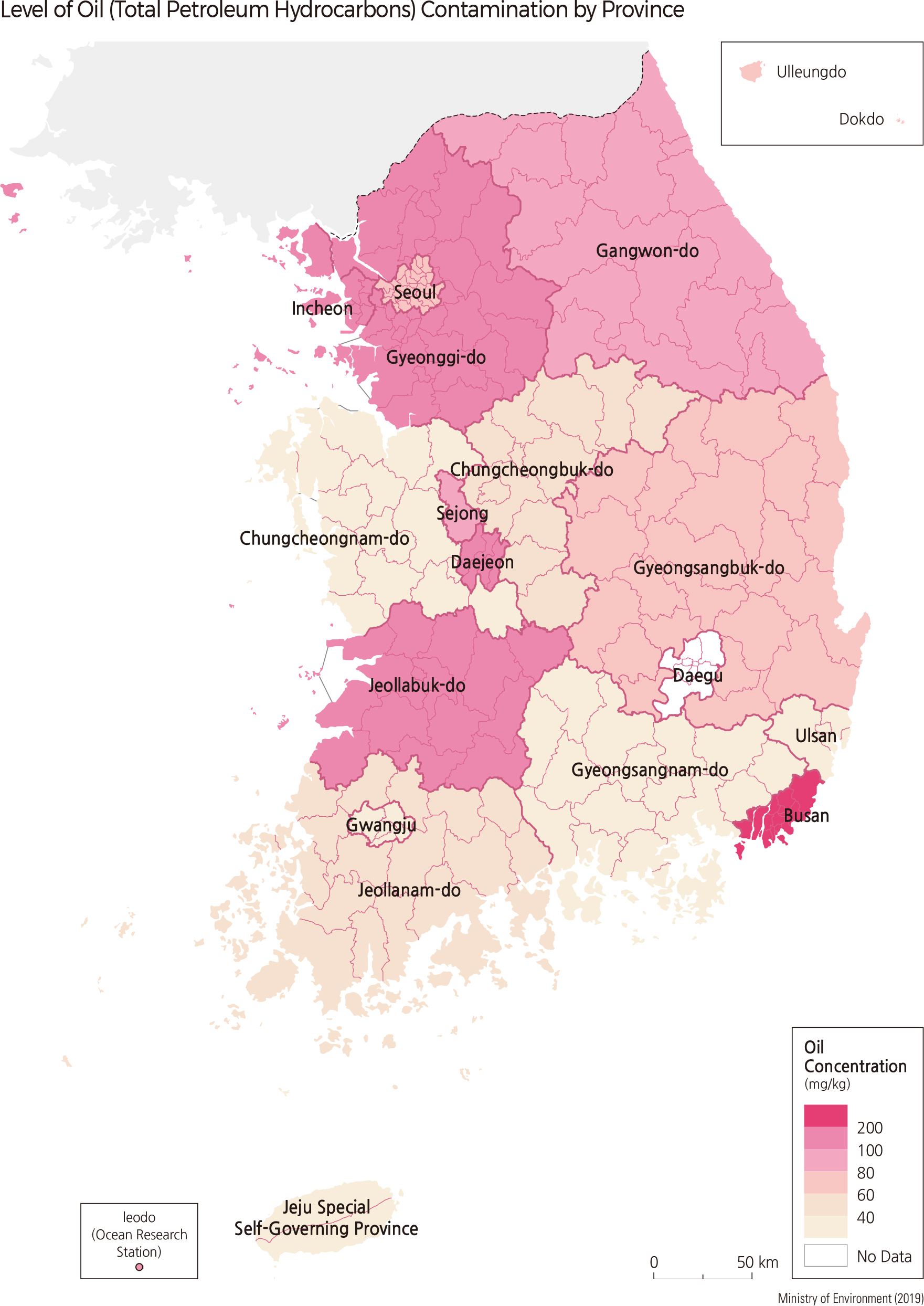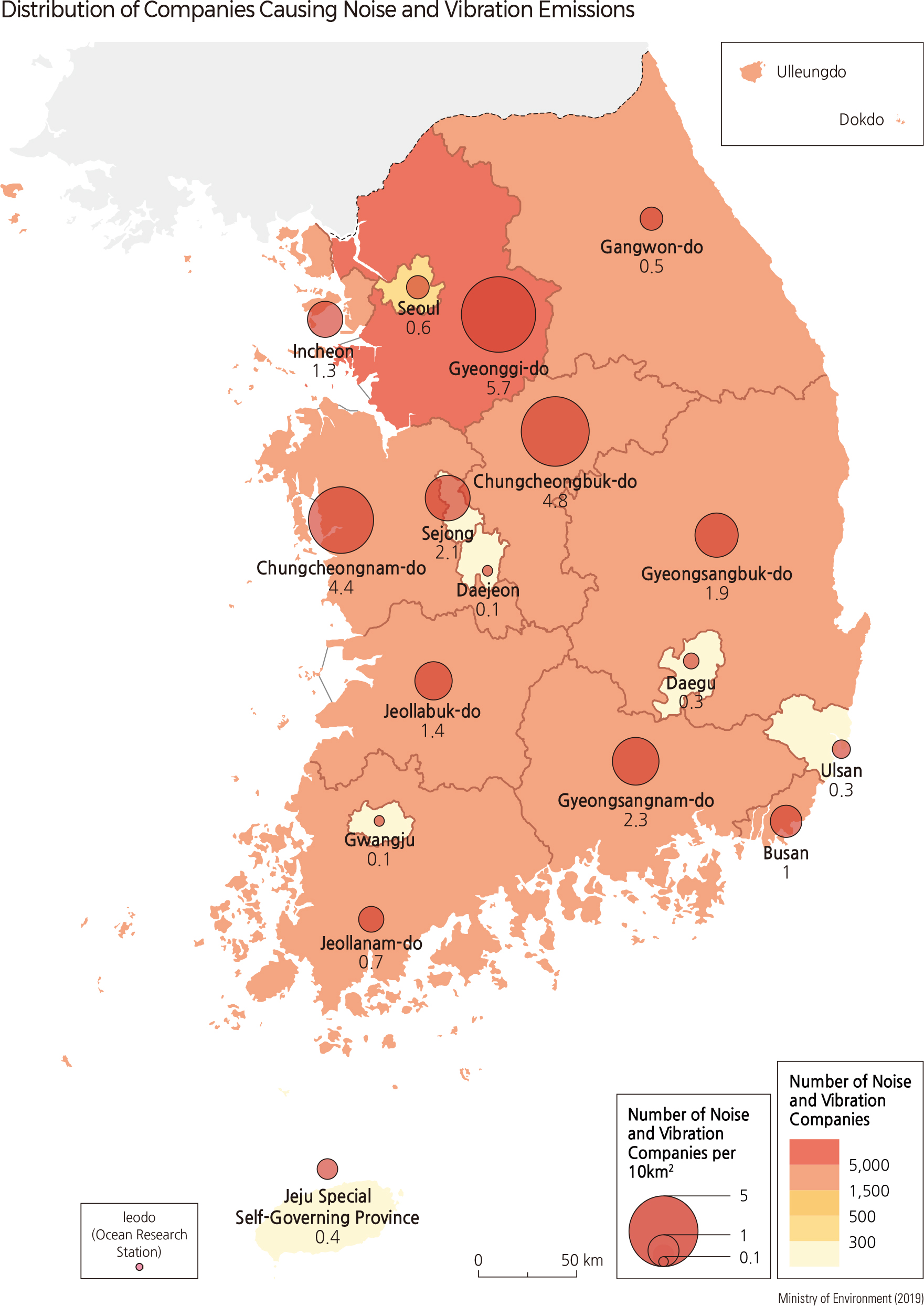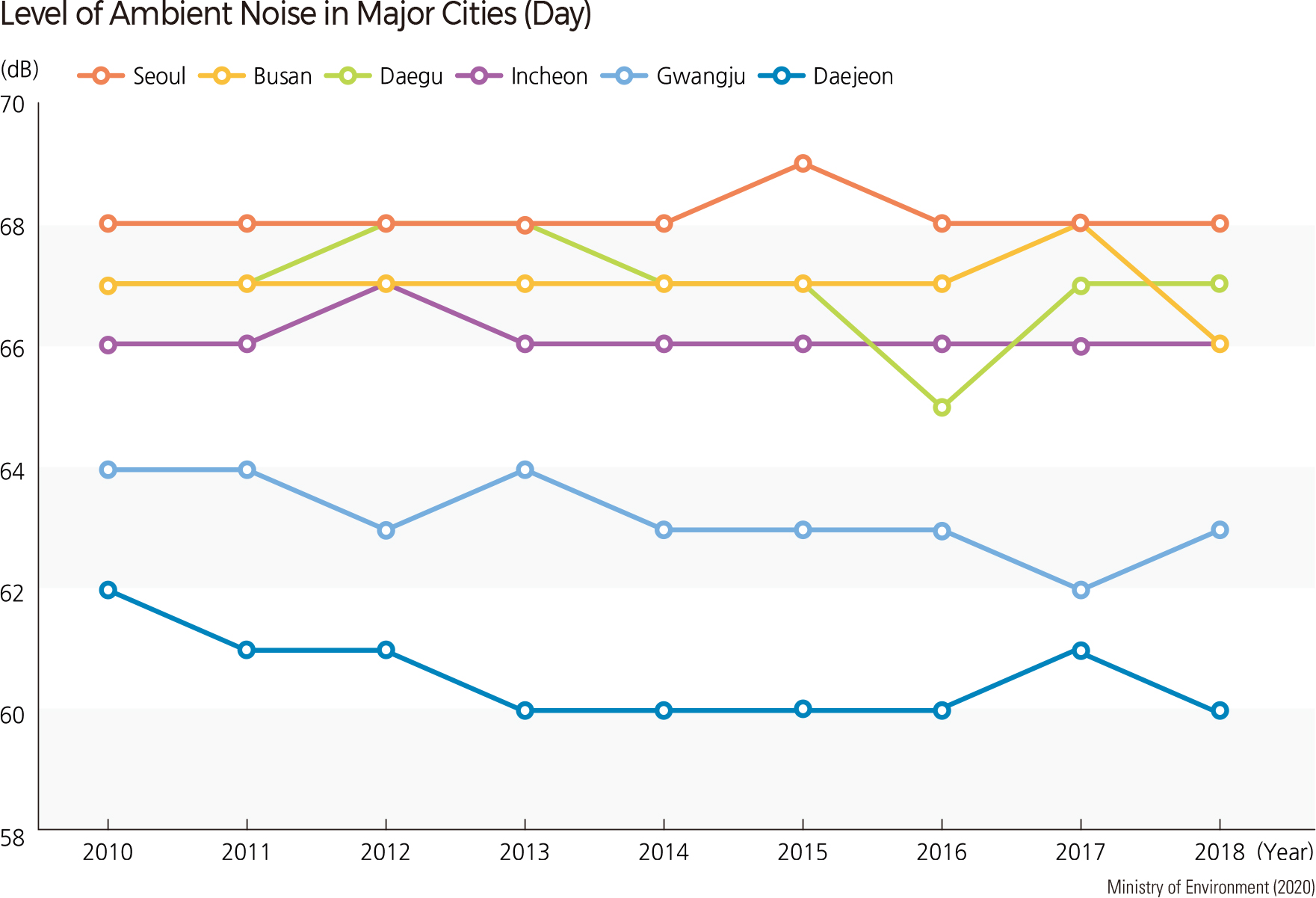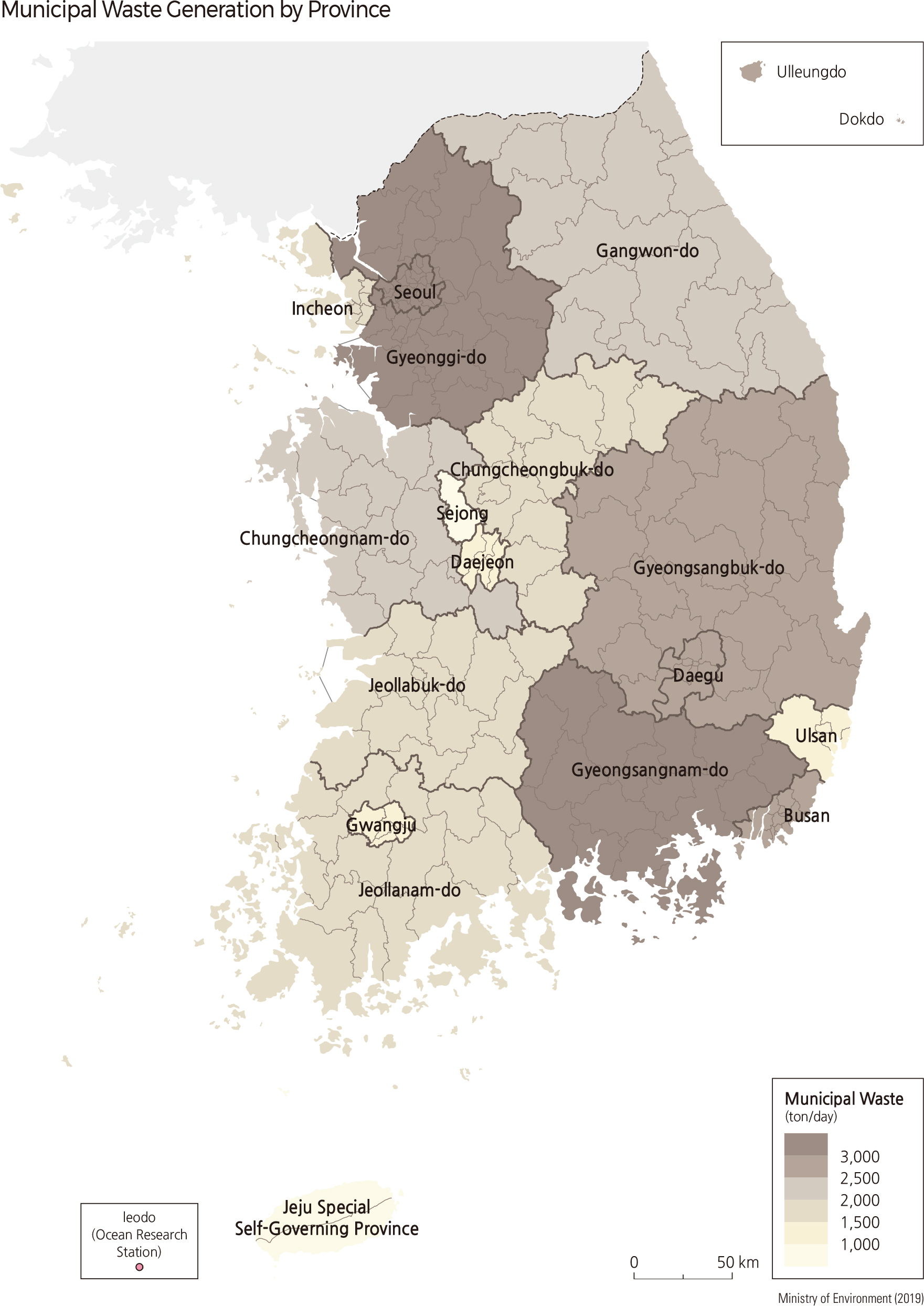English II 2020
Environmental radioactivity refers to radioactive materials that are produced from nature as well as human-made sources. Radioactive contamination and exposure can lead to birth defects, cancer, and mental trauma because of how radiation affects the human mind and body. Radioactivity is monitored automatically by national environmental radioactivity monitoring stations, which control and manage disasters related to nuclear and radiation exposure and prepare responsive measures. The Korea Institute of Nuclear Safety constantly monitors changes in levels of environmental radiation and radioactivity through surveillance networks across the country.
There are 15 regional radioactivity monitoring stations and 155 central radioactivity monitoring stations that periodically measure particles, radioactive fallout, and beta and gamma nuclides from precipitation. Data are collected in real-time to observe changes in radiation levels and provided to the public through the "Integrated Environmental Radiation Monitoring Network" (https://iernet.kins.re.kr/).
Additionally, since 2008 the Ministry of Environment has been measuring indoor radon concentrations after establishing Comprehensive Measures for Indoor Radon. Radon is a radioactive material that has recently been widely regarded as the cause of lung cancer, and its danger has been greatly highlighted. The Indoor Air Quality Control Act set an acceptable radon level (i.e., standard limit) at 200 Bq/㎥ or less when the Act was first made. However, since July 2019, the level has been set to 148 Bq/㎥ or less. As of winter 2018, the radon concentration in houses is the lowest in Busan and the highest in Daejeon, but all are below the standard.
Cadmium (Cd), lead (Pb), and petroleum are also types of carcinogens. These contaminate not only soil and groundwater but also crops and can cause fatal damage to humans. Aware of these issues, the Ministry of Environment has been monitoring national soil contaminants since 1987 as reference points to establish policies for soil contamination prevention, purification, and restoration. The soil monitoring network was expanded from 250 locations (five stations in each location) in 1987 to 3,000 in 1998. As of 2018, the network had been reorganized to 1,000 stations. The number of items of data collection, such as cadmium (Cd) levels and soil acidity (pH), were increased from 9 items in 1987 to 12 as of today.
Since January 6, 1996, the nation and local governments have operated the networks of soil measurement. In the 2010s, soil pollution by heavy metals such as cadmium and lead continuously decreased. By region, cadmium and lead pollution levels are highest in Ulsan or Incheon, where industrial facilities are concentrated. Oil pollution is highest in Busan.
As the population increases and urbanization intensifies, the damages caused by noise are also increasing. Whereas interest in the quality of life continues to grow, the desire for a quiet environment is prevalent. In 2018, the noise level in Daejeon and Gwangju cities during the day met the daytime environmental standard of 65 dB or less. For the nighttime standard, all metropolitan areas excluding Daejeon city were higher than the nighttime standard of 55 dB. The noise level has either shown a slight fluctuation within 1 dB, or has remained constant throughout urban areas for three years. In order to suppress noise pollution, soundproof infrastructures, traffic noise management policies, and other noise-reducing measures have been introduced.
Per Article 52 of the Noise and Vibration Control Act, the Ministry of Environment announces the number of businesses that emit noise and vibration in the 17 metropolitan areas. As of 2018, about 20,000 industrial facilities are concentrated in Gyeonggi-do, which is about half of the nation's industrial facilities. Gyeongsangnam-do and Chungcheongnam-do have about 4,000.
As of 2018, daily domestic waste is about 47,000 tons. In 2013, it was about 40,500 tons. It has been rising rapidly since 2014. This can be understood as a result of the significant increase in online shopping due to lifestyle changes. By city and province, Gyeonggi-do has the largest amount of daily domestic waste with 9,861 tons per day, followed by Seoul with 8,587 tons. Sejong Special Self-Governing City has the smallest amount of daily domestic waste at 320 tons per day, and Jeju Special Self-Governing Province has 964 tons of daily domestic waste. The densely populated Seoul, Gyeonggi, and Incheon account for about 44% of the total national daily domestic waste at 20,433 tons. |
